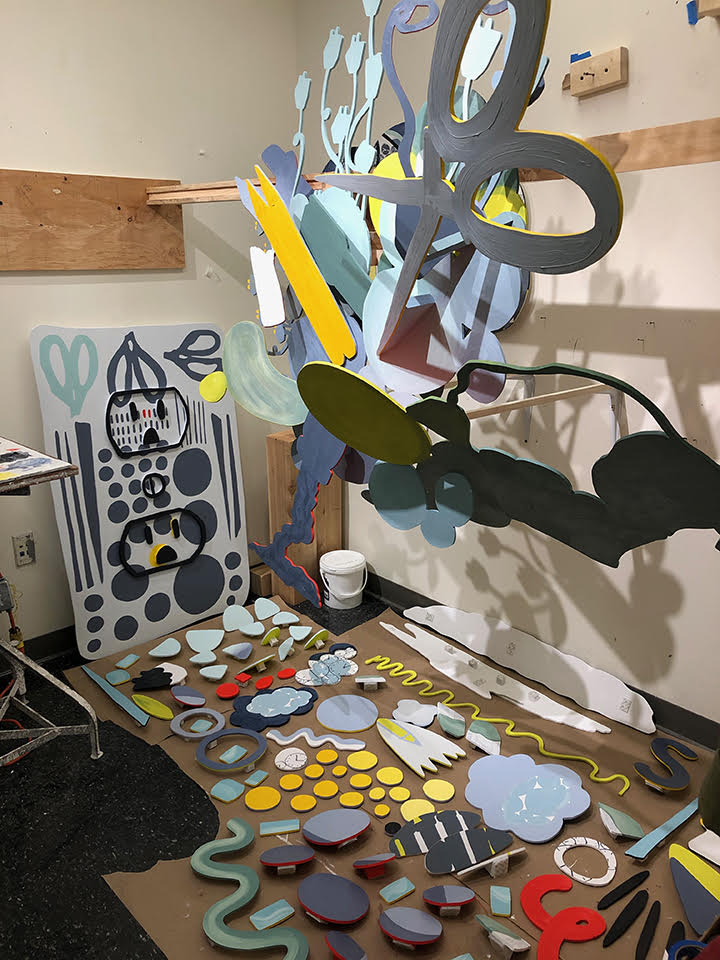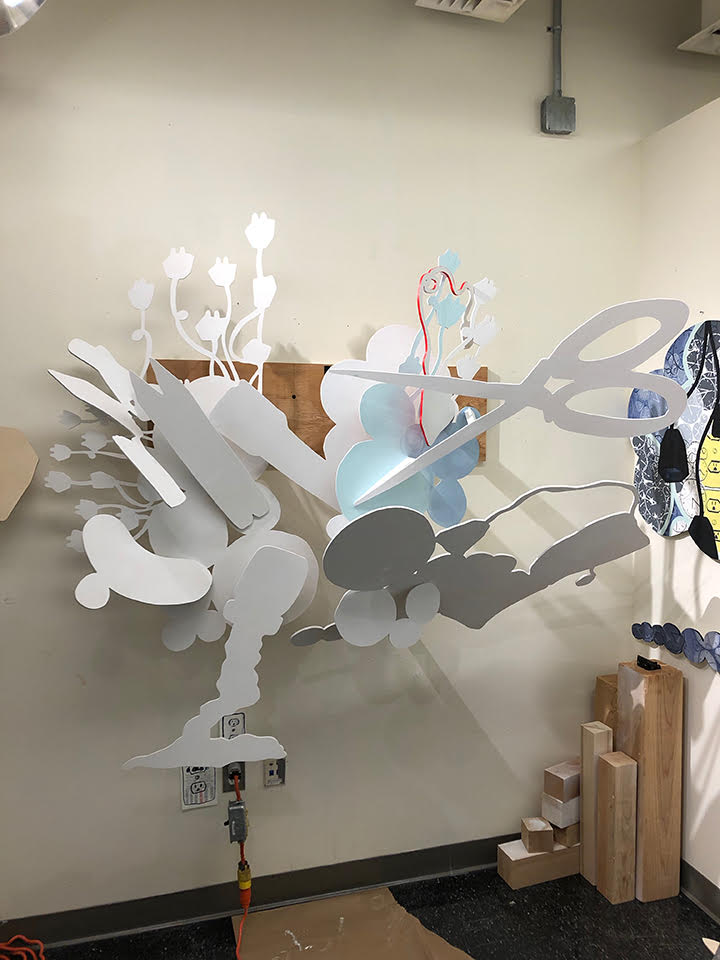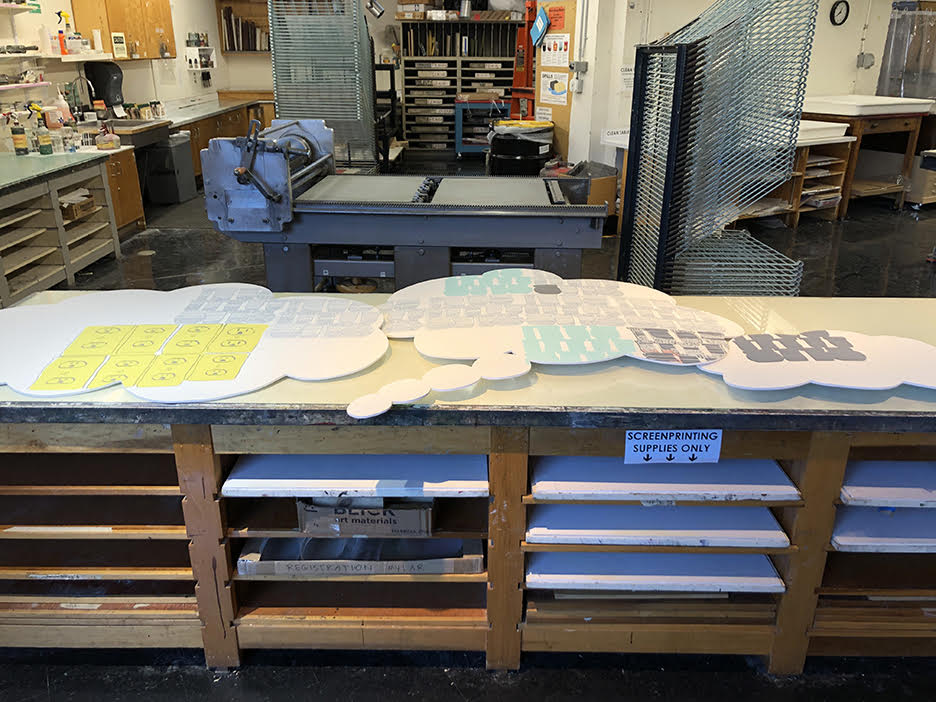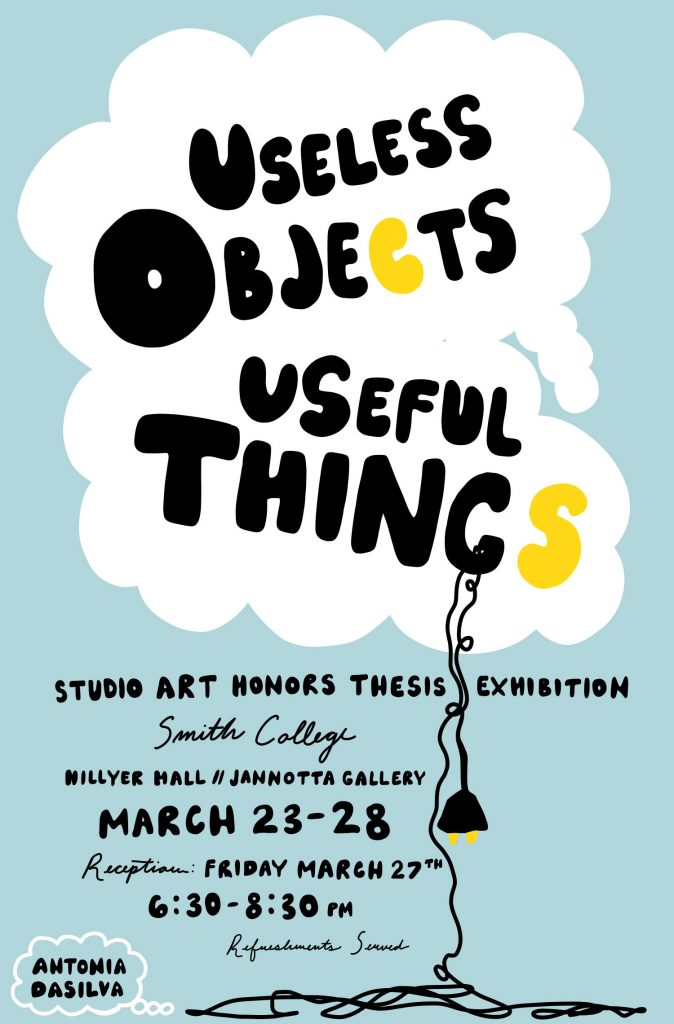Useless Objects // Useful Things
Due to the unprecedented campus closure this Spring, Antonia DaSilva’s honors exhibition Useless Objects // Useful Things, originally scheduled to open in March in the Jannotta Gallery could not be installed. Antonia’s thesis work weaves together painting, installation, printmaking, and methods of sculptural fabrication, to consider the frenetic world of abundant objects and their possible obsolescence. We step into the studio with Antonia to hear a bit more about her practice.
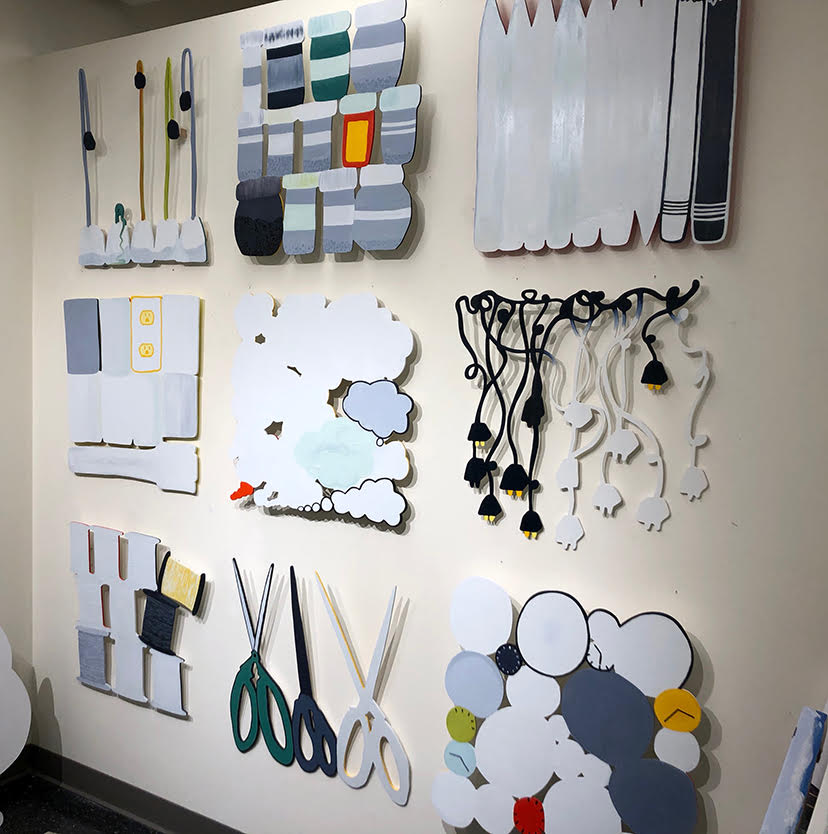
Artist Statement
Utilizing a traditional painting surface, plywood, my work explores what a painting can be once it expands beyond the limitations of a rectangular frame hanging flat on a wall. I am interested in a painting’s identity as an object in and of itself, and not just a picture of an object. I use irregular shapes and think about the entire surface area of the panel: front, edges, and back. Composition becomes about much more than just what exists within a defined frame. It begins to encompass the wall and the relationship between the object and the wall.
The materials I choose to work with, flat plywood and oil and acrylic paint, keep my work grounded in a painting tradition. The way I choose to fabricate the panels and manipulate them into a variety of shapes, push the paintings into the realm of sculpture and installation. Allowing the paintings to become three-dimensional structures gives them an added level of performance. It exaggerates what a flat artwork on a gallery wall already is: a very specific staging presented by the artist to an audience. My interest in the play between painting, sculpture, and installation also stems from the combination of artists who have inspired my work: Elizabeth Murray, Philip Guston, Judy Pfaff, and Sarah Sze, to name a few.
The formal interests noted above intertwine with the content of my work which is concerned with consumerism and accumulations of objects. We live in a world dominated by the interchange, proliferation, and inevitable build-up of material things. Thinking of a painting as a dynamic, three-dimensional entity allows me to examine both the mass-produced objects that surround me and the very specific objects I choose to manufacture.
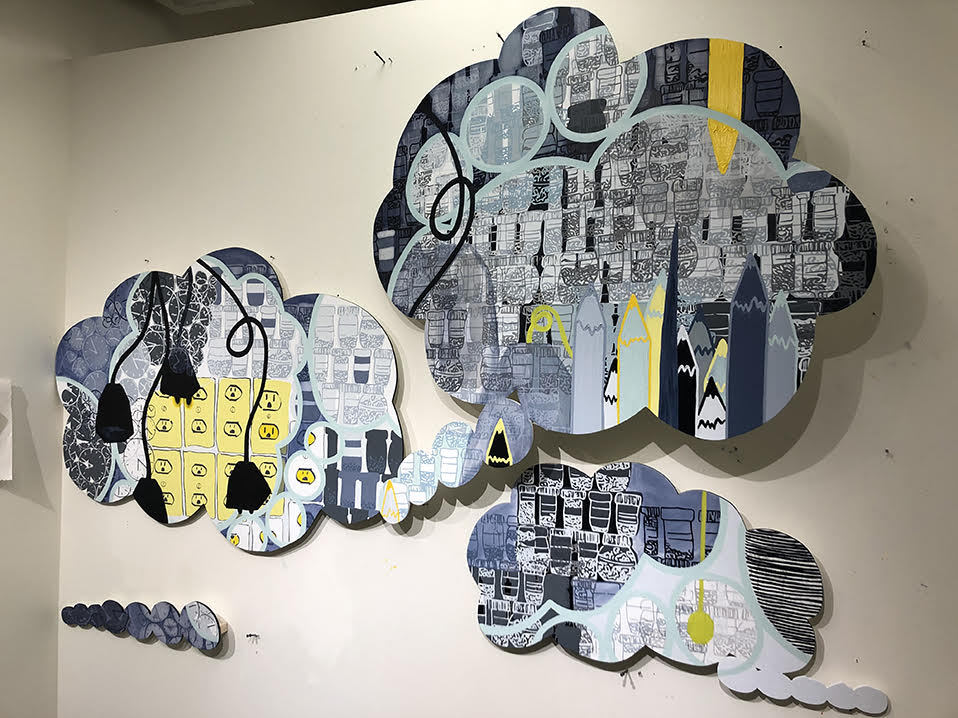
Where did the idea for this honors project begin?
Antonia DaSilva: My project developed out of an interest in objects as subject matter, and a desire to investigate oil painting in non-traditional formats like shaped panels and three dimensions. Conceptually, this project also stemmed from thinking about Foucault’s The Order of Things, in relation to the everyday objects with which we surround ourselves. Order appeared to me to be tied up in our obsession with material things. I wanted to investigate this idea further.
Tell us a little bit about your approach to art and your studio practice.
AD: My practice is reliant on research, sketching, and testing. I find writing that is related to my current thinking, be that about other artists, or theory, or subject matter. Even if this research doesn’t appear in any tangible way in the work, it fuels my thinking and leads to other ideas. It also helps me make both formal and conceptual decisions.
Almost all my pieces start out as drawings, either digital or hand drawn. I don’t want to create a map for how to paint the piece, but I want an idea of where the piece could go. This also allows me to test my ideas on different scales and in different color palettes. Throughout this project, my practice has also become more about the construction and assemblage of the pieces. A lot of problem solving goes into this part of the work.
What are some influences in your work?
AD: My work is influenced by the things I see and use every day: in my house, in the store, on the street, in the studio. It is also influenced by graphic and cartoon imagery that often uses simple shapes and bold, bright, colors. I look at the work of a variety of different artists, but a few that have been particularly influential for this project are Philip Guston, Elizabeth Murray, and Jessica Stockholder.
